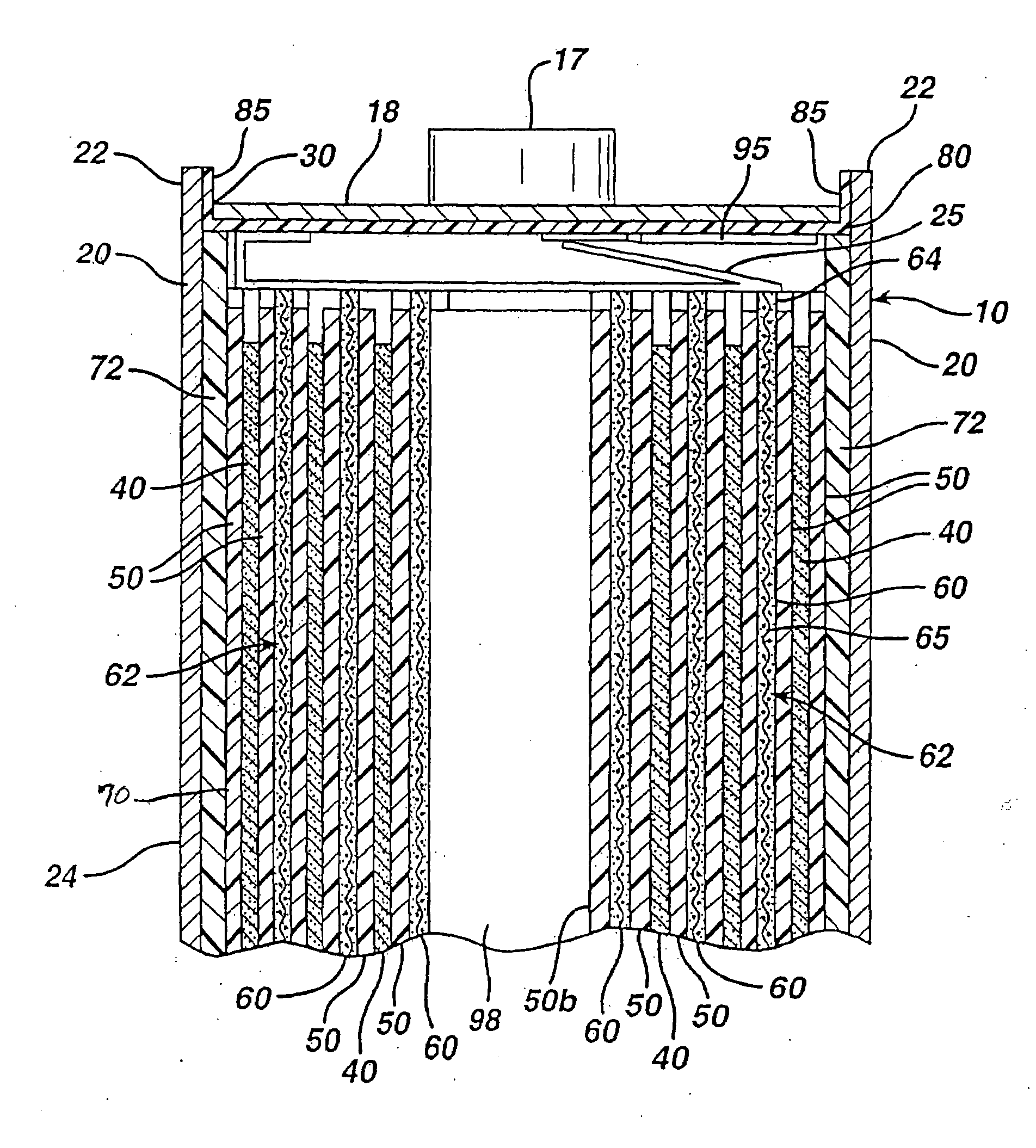Lithium cell
a lithium cell and lithium-ion technology, applied in the field of lithium cell, can solve the problems of significant adverse effects on cell performance, no noticeable reduction in cell discharge performance, etc., and achieve the effects of saving processing costs, good results, and cost saving
- Summary
- Abstract
- Description
- Claims
- Application Information
AI Technical Summary
Benefits of technology
Problems solved by technology
Method used
Image
Examples
Embodiment Construction
[0036]The Li / FeS2 cell of the invention is desirably in the form of a spirally wound cell as shown in FIGS. 1-5. A desirable wound cell 10 configuration comprising a lithium anode 40 and a cathode composite 62 comprising iron disulfide (FeS2) with separator sheet 50 therebetween is shown in the figures. The anode may comprise a sheet of lithium or lithium alloy 40. The cathode composite may comprise a coating of cathode material 60 comprising iron disulfide (FeS2) which is coated on at least one side of a substrate 65 as shown best in FIGS. 4 and 5. The cathode material 60 may also be coated on both sides of substrate 65. The substrate or grid 65 is preferably an electrically conductive substrate, such as a sheet of aluminum, or stainless steel foil. The conductive substrate 65 may be a continuous solid sheet without apertures or may be a sheet with apertures therein. For example, substrate 65 may be formed from expanded stainless steel foil or expanded aluminum foil or from piercin...
PUM
| Property | Measurement | Unit |
|---|---|---|
| voltage | aaaaa | aaaaa |
| voltage | aaaaa | aaaaa |
| voltage | aaaaa | aaaaa |
Abstract
Description
Claims
Application Information
 Login to View More
Login to View More - R&D
- Intellectual Property
- Life Sciences
- Materials
- Tech Scout
- Unparalleled Data Quality
- Higher Quality Content
- 60% Fewer Hallucinations
Browse by: Latest US Patents, China's latest patents, Technical Efficacy Thesaurus, Application Domain, Technology Topic, Popular Technical Reports.
© 2025 PatSnap. All rights reserved.Legal|Privacy policy|Modern Slavery Act Transparency Statement|Sitemap|About US| Contact US: help@patsnap.com



